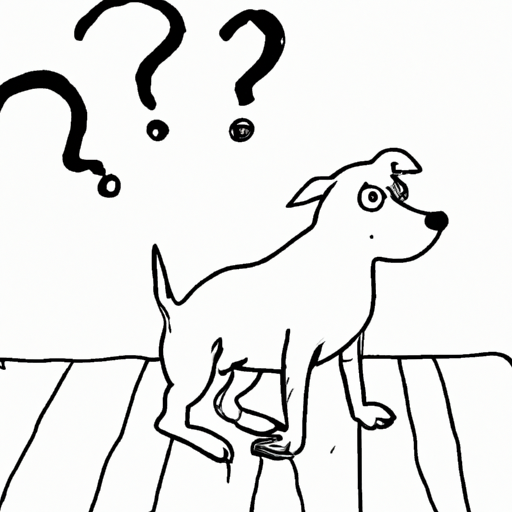Understanding the Behavior
You’ve probably seen it happen: your beloved pup suddenly sits down on the carpet and starts scooting their butt across the floor. It might seem funny or even cute at first, but it can actually be a sign that something’s not quite right with your canine companion.
Dogs scoot their butts on the floor for a variety of reasons, most of which have to do with discomfort in the anal area. This behavior, known as “scooting,” is a way for dogs to scratch, rub, or clean the area around their anus. It’s important to understand the reasons behind this behavior so you can help your pet feel more comfortable and prevent any potential health problems.
Potential Causes for Scooting
Here are some of the most common reasons why dogs might scoot:
- Anal Sac Problems: Dogs have two small glands on either side of their anus, known as anal sacs. These sacs can become impacted, infected, or abscessed, causing discomfort and prompting your dog to scoot.
- Parasitic Infections: Worms or other parasites can cause itching and discomfort in the anal area.
- Allergies: Dogs can develop allergies to certain foods or environmental factors, which can cause itching and inflammation around the anus.
- Injury or Trauma: Any kind of injury to the anal area, including cuts, abrasions, or foreign objects, can lead to scooting.
| Cause | Symptoms | Treatment |
|---|---|---|
| Anal Sac Problems | Swelling, redness, bad smell | Vet visit for expression or antibiotics |
| Parasitic Infections | Weight loss, diarrhea, visible worms | Anti-parasitic medication |
| Allergies | Itching elsewhere on body, changes in stool | Diet changes, antihistamines |
| Injury or Trauma | Bleeding, visible wound | Vet visit for treatment |
How to Respond to Scooting
When you notice your dog scooting, it’s important not to ignore it. While it might not always indicate a serious problem, it’s a sign that your dog is uncomfortable and needs your help. If the scooting continues for more than a day or two, or if you notice other signs of illness like changes in appetite, lethargy, or unusual behavior, it’s time to consult with a veterinarian.
Preventing Scooting
Preventing scooting starts with regular care and observation. Here are some steps you can take:
- Regular vet check-ups: This helps catch and address any potential issues early.
- Monitor your dog’s bowel movements: Changes can indicate a problem.
- Proper diet: Good nutrition can help prevent allergies and parasite infections.
- Regular grooming: This can help you spot any potential injuries or issues early.
FAQ
Q: Is scooting always a sign of a health problem?
A: Not always. Sometimes, dogs may scoot just because the area is dirty or itchy. However, if the behavior continues, it’s best to consult with a vet.
Q: Can I treat my dog’s scooting at home?
A: It’s better to consult with a vet to determine the cause of the scooting. Some issues, like anal sac problems or injuries, will need professional treatment.
Q: Is scooting more common in certain breeds?
A: Any breed can scoot, but smaller breeds are more prone to anal sac problems, which is a common cause of scooting.
Your role as a caregiver means being attentive to your dog’s behavior and well-being. Understanding why your dog might be scooting can help you provide the care they need and ensure they’re as comfortable and healthy as possible.



